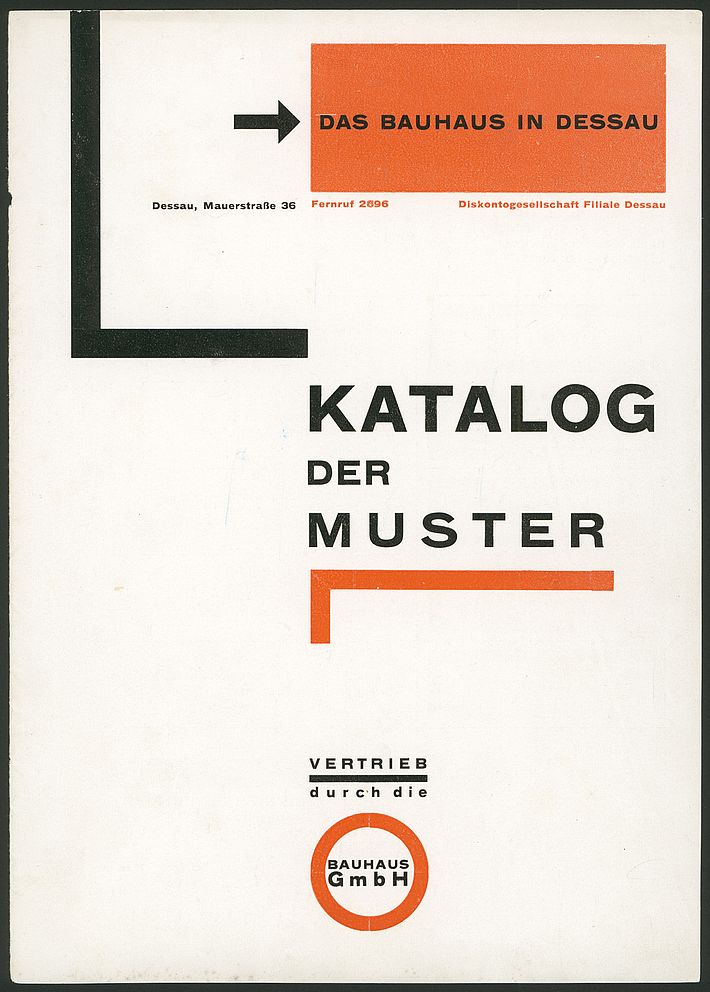Catalogue of Designs
Herbert Bayer, 1925
In 1925 the Bauhaus compiled the Catalogue of Designs in order to promote selected products from the Bauhaus workshops to prospective buyers. Sales and distribution were to be taken over by the newly founded Bauhaus GmbH. Even the consideration of special customer wishes was not ruled out, as long as they corresponded to “the idealistic intentions of the Bauhaus”, as stated in fine print on the catalogue’s back cover.

[Translate to English:] Text
The catalogue was designed as a collection of loose-leaf sheets, allowing the insertion of additional product sheets as desired. Herbert Bayer was responsible for the clear, simplified design of the catalogue, which used black and red printing on a white background. Each Bauhaus product was presented on a separate page with objective, matter-of-fact photography and information about its dimensions, design details and respective advantages.
For example, Marianne Brandt’s tea infuser (1924) was praised for its “ease of use” and “quick preparation of tea”. The table lamp designed by Carl J. Jucker and Wilhelm Wagenfeld (1923/24) was lauded for its (well-tested) best light distribution, its especially pleasant light and its particular suitability for use as a bedside lamp or a desk lamp – which, looking back, proved not to be completely true from a functional point of view. With Wolfgang Tümpel’s tea ball infuser, everyone could “make their tea as strong as they want”, and a matching stand designed by Wilhelm Wagenfeld “protects the tea table from stains”. Furniture items designed by Marcel Breuer, Josef Albers and Alma Buscher were also on offer, as was the Bauhaus chess set by Josef Hartwig.
However, none of the names of any of the designers were mentioned in the catalogue. Products were given a code number and a letter abbreviation for the workshop in which they were made. Because the catalogue appeared shortly after the Bauhaus relocated to Dessau, most of the designs had been created during the school’s Weimar period and also appeared in the 7th volume of the Bauhaus Books series. That catalogue, which was published earlier the same year and was titled “Neue Arbeiten der Bauhauswerkstätten” (New Works from the Bauhaus Workshops), became far better known than Bayer’s catalogue.
[NO 2017, Translations: DK]
- Literatur:
- Kaiser-Schuster, Britta: Werbung für die Bauhaus-Produkte. Das Ding an sich im Katalog der Muster, in: Brüning, Ute (1995): Das A und O des Bauhauses. Bauhauswerbung: Schriftbilder, Drucksachen, Ausstellungsdesign, Leipzig, S. 141–144.
- Kries, Mateo und Kugler, Jolanthe (2015): das bauhaus #allesistdesign, Weil am Rhein.
- Neurater, Sebastian (2013): Das Bauhaus und die Verwertungsrechte. Eine Untersuchung zur Praxis der Rechteverwertung am Bauhaus 1919–1933, Tübingen.